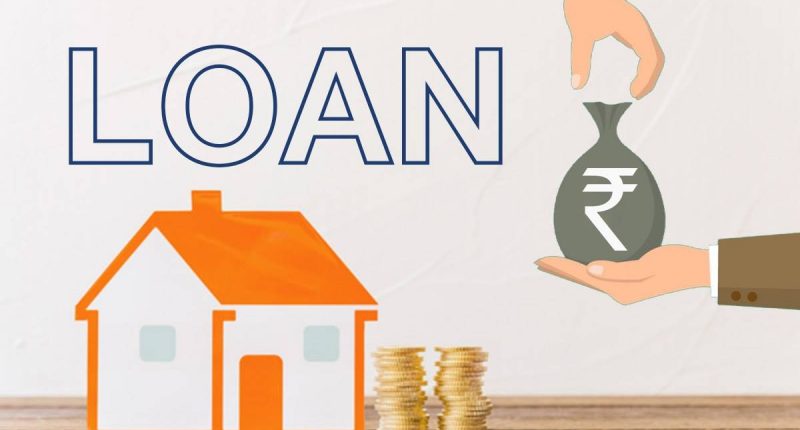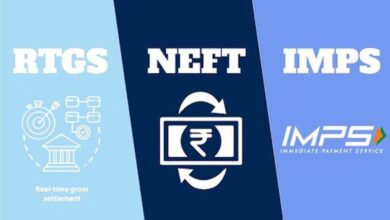Hike In Loan Demand Leads To A 12-Year High In Short-Term Debt Of Indian Banks; Stagnant Salaries And Increasing Cost Of Living, Aspirational Goals, A Ticking Time Bomb?
Indian banks are increasingly turning to short-term borrowing through certificates of deposit to address a funding gap driven by solid loan growth and slower deposit accumulation. This poses significant risks, including heightened sensitivity to interest rate fluctuations and liquidity management challenges. Additionally, factors such as stagnant salaries, a high cost of living, and rising aspirational goals are contributing to this phenomenon, deepening the financial strain on both banks and individuals.

Indian banks are increasingly relying on short-term borrowing, specifically through certificates of deposit, to address a funding gap caused by strong loan growth, outpacing slower deposit accumulation.
As a result, the outstanding amount of these certificates surged to 4.3 trillion rupees ($51.4 billion) in the fortnight ending July 12, marking the highest level since June 2012.
Reserve Bank of India Governor Shaktikanta Das had earlier expressed concerns about the risks associated with the “very high growth” in personal loans and has urged banks to enhance their internal surveillance mechanisms to mitigate potential risks.
“Certain components of personal loans are recording very high growth. These are being closely monitored by the Reserve Bank for any signs of incipient stress,” Das stated during his monetary policy speech last year.
According to RBI data for FY23, personal loans grew by 30.8% in August compared to 19.4% a year ago, with total credit to the segment standing at ₹47.7 trillion, up from ₹36.47 trillion the previous year.
Credit to the sector increased by 17% to ₹47.70 trillion in August from ₹40.85 trillion in April, significantly surpassing last year’s 7% growth rate for the same period. Within this segment, credit card outstanding grew by 30% compared to 26% a year ago, vehicle loans saw a 21% growth, and loans against jewellery grew by 22%.

According to the RBI, personal loans accounted for 38% of incremental bank credit in August.
Additionally, a report by India Ratings in August highlighted that non-banking financial companies (NBFCs) have increased the proportion of collateral-free loans in their portfolios to achieve higher yields amidst rising borrowing costs.
Data from 12 large NBFCs compiled by the rating agency showed that the share of unsecured loans rose to 30% of total assets under management (AUM) in FY23, up from 26% in FY22 and 23% in FY21.
The AUM of these unsecured loans grew by 51% annually during FY23, compared to 30% in FY22 and a 2% decline in FY21. In contrast, the total AUM of these NBFCs grew by 19% year-on-year during FY23, compared to 9.6% in FY22 and 3.3% in FY21.
These unsecured loans include small business loans and personal loans such as consumer durables and individual loans.
The Present Data
Indian banks are increasingly turning to shorter-maturity borrowing to bridge the funding shortfall caused by robust loan growth and declining deposits.
The outstanding amount of certificates of deposit issued by banks rose to 4.3 trillion rupees ($51.4 billion) in the fortnight through July 12, according to the latest data from the Reserve Bank of India, marking the highest level since June 2012.
This increase comes as bank loans expanded by 17.4% in the year through June 28, outpacing the 11% growth in deposits.
Reserve Bank of India Governor Shaktikanta Das recently cautioned that increased borrowings heighten lenders’ sensitivity to interest rate fluctuations and present challenges for liquidity management.
He noted that deposit growth may be lagging as households redirect their savings to financial markets.
“Amid stiff competition, it has been tough to garner deposits even after the lenders have raised their deposit rates,” said Rena Kwok, a credit analyst at Bloomberg Intelligence. “So they have to turn to other funding sources to meet the strong loan demand. In the near term, deposit growth may still be a challenge.”
Depositors in India have been saving less in banks as soaring equity markets and options like mutual funds, insurance funds, and pension funds attract them.
To address the wide credit-deposit gap, some banks have raised term deposit rates, while HDFC Bank Ltd. is considering the sale of a loan portfolio.
Banks have also raised significant amounts from the local-currency bond market to fund infrastructure and affordable housing projects.
Higher borrowing via certificates of deposit may impact banks’ net interest margins, as this funding is costlier than term deposits, according to Soumyajit Niyogi, director at India Ratings & Research Pvt., the local arm of Fitch Ratings.

The Dangers of Increased Short-Term Borrowing for Banks and the Contributing Factors of Stagnant Salaries, High Cost of Living, and Aspirational Goals
Increased short-term borrowing poses significant risks. First, it leads to interest rate sensitivity; as banks rely more heavily on short-term borrowing, their exposure to interest rate movements increases.
If interest rates rise, the cost of these borrowings will escalate, squeezing banks’ profit margins; this is because the interest rates on short-term borrowings tend to be more volatile compared to longer-term deposits, leading to greater unpredictability in funding costs.
Secondly, it may lead to liquidity management challenges.
Short-term borrowings require frequent refinancing, which can strain banks’ liquidity management.
In times of market stress or economic downturns, accessing short-term funds may become difficult or expensive, potentially leading to liquidity crises which can force banks to sell assets at unfavorable prices or seek emergency funding, which could undermine their financial stability.
Thirdly, the impact on net interest margins.
According to Soumyajit Niyogi, director at India Ratings & Research Pvt., the cost of funding through certificates of deposit is higher than that of term deposits; the increased cost can compress net interest margins (NIMs), reducing overall profitability.
Lower NIMs can limit banks’ ability to generate capital internally, impacting their growth and resilience.
In an environment of sluggish deposit growth, banks face stiff competition to attract funds. Despite raising deposit rates, many banks struggle to garner sufficient deposits, leading to competitive pressure, which can lead to an overreliance on more expensive short-term funding sources, further stressing their financial health.

So why is there a hike in demand for loans?
This stagnation in wages means that households have less disposable income to save, leading to reduced bank deposits; as salaries fail to increase adequately, individuals are less likely to place their limited funds in savings accounts, opting instead to seek higher returns through other investment avenues.
Another factor is the constant hike in the cost of living.
The increasing cost of living, particularly in urban areas, has put additional pressure on household finances.
Expenses such as housing, education, healthcare, and daily necessities are consuming a larger portion of income, hence leaving less available for savings.
Therefore, with fewer deposits coming into banks, the gap between loan growth and deposit growth has widened, pushing banks to seek alternative funding sources like short-term borrowings.
The rise of consumerism and aspirational goals among the Indian population further contributes to the funding gap.
Individuals are increasingly inclined to spend on lifestyle-enhancing goods and services, such as cars, electronics, and luxury items; consumption-driven behaviour reduces the propensity to save, as people may prioritize immediate gratification and investment in personal assets over traditional savings.
The Broader Economic Impact
It would be safe to assume that the interplay between stagnant salaries, high cost of living, and aspirational goals not only affects banks but has broader economic implications.
Reduced savings rates can limit the availability of capital for investment in productive sectors, potentially slowing economic growth. Moreover, high levels of consumer debt, driven by aspirational spending, can lead to financial instability if individuals are unable to meet their repayment obligations.
It is becoming increasingly evident that in the last few years, the gap in income inequality has dramatically increased. At the same time, India’s population is struggling with another critical issue – rising unemployment.
These factors have reached a point where the Modi government urgently needs to address these concerns, for they are a ticking time bomb that could have a very negative impact on the economy and the population at large.

The Last Bit, The increasing reliance of Indian banks on short-term borrowing to bridge funding gaps presents significant risks, including heightened interest rate sensitivity and liquidity management challenges.
These risks are compounded by the broader economic context of stagnant salaries, a high cost of living, and rising aspirational goals, which reduce household savings and worsen the funding gap.
Hence, to mitigate these dangers, it is crucial for banks to diversify their funding sources, enhance risk management practices, and for the govt to address the underlying economic issues affecting household savings behaviour, such as the growing income gap and the rising unemployment rate.




